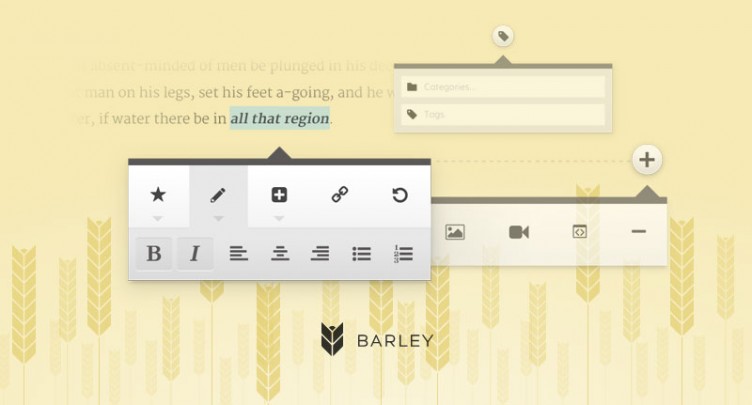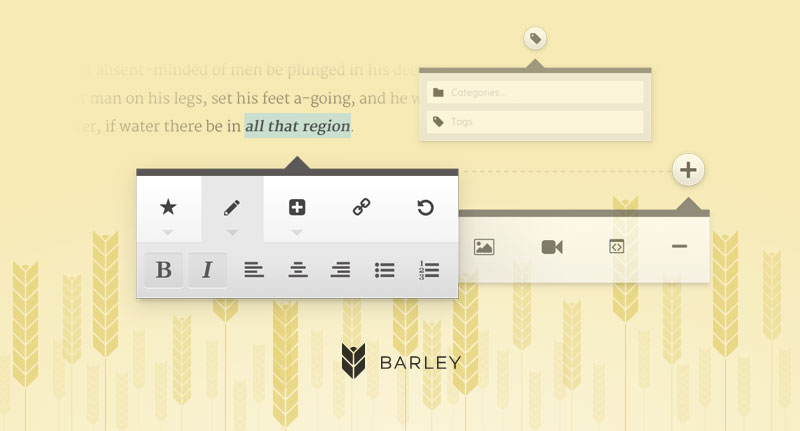 I’ve had an opportunity to play with Barley for WordPress, an inline editor plugin. Barley is a two-sided product. Barley is a hosted, PHP based CMS, and Barley for WordPress is a WordPress plugin that extends the hosted Barley editing experience to WordPress publishers.
I’ve had an opportunity to play with Barley for WordPress, an inline editor plugin. Barley is a two-sided product. Barley is a hosted, PHP based CMS, and Barley for WordPress is a WordPress plugin that extends the hosted Barley editing experience to WordPress publishers.
My first thought when seeing Barley for WordPress was that it was interesting timing, considering the front-end editing WordPress core plugin project that’s currently under development. Colin Devroe is a co-founder of Plain, the company behind Barley, and I asked him about how Barley for WordPress fits in:
Inline editing is still very new to most people. Just as there isn’t any one email client or Twitter client that is right for everyone, surely there isn’t any one inline editor that will be just right for every use case.
We hope to bring the Barley editing experience to many more platforms and we hope people begin to expect a great, simple, yet full featured editing experience wherever they see Barley pop up. So we sort of hope Barley becomes a standard.
Using the Barley inline editor
I was a little skeptical when I heard about the Barley for WordPress project. It seems a bit odd to me that a company would build a PHP based, non-WordPress CMS and then extend that publishing experience for self-hosted WordPress. However, they’ve done a very nice job with their editor. Barley for WordPress is a smooth writing experience, and I could imagine it being very useful for a lot of site owners and consultants that cater to mostly non-technical users.
There isn’t a whole lot to say from a technical perspective. I’ve used this product on a demo site, but I haven’t been able to analyze the code at all. But from a user perspective, it works quite well. Their demo video gives a good perspective on the experience:


 Jeffrey Zeldman announced in a
Jeffrey Zeldman announced in a 
